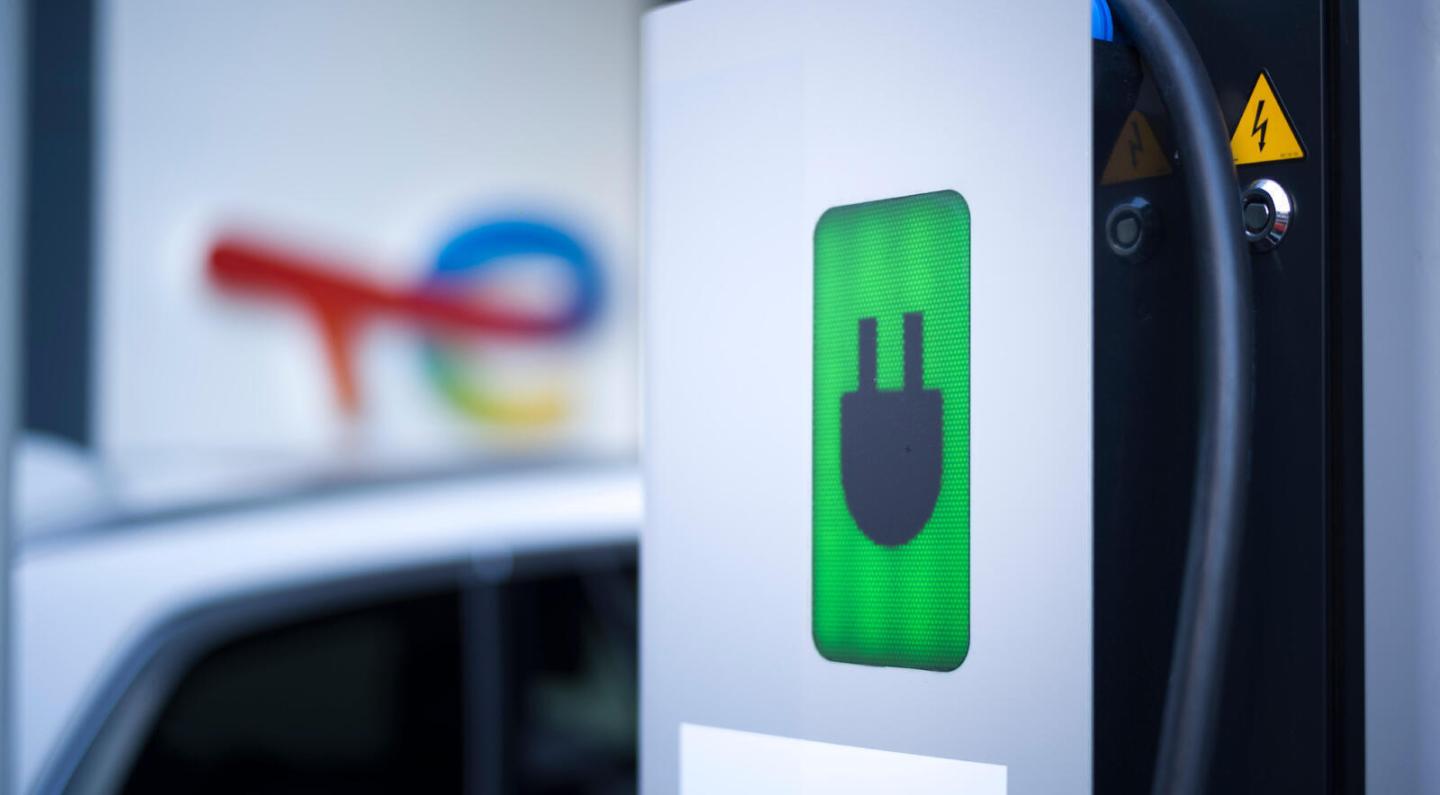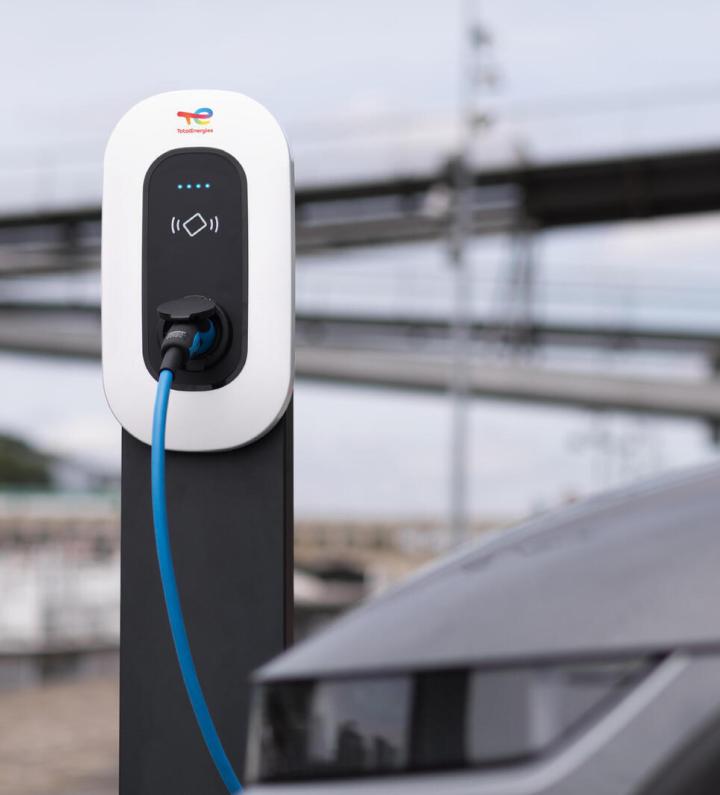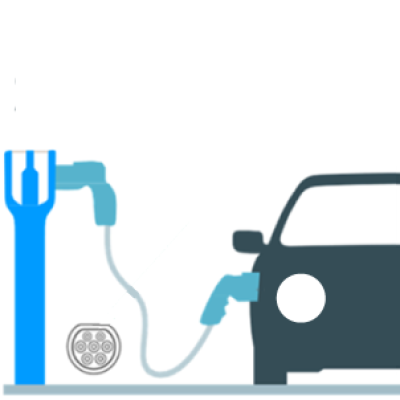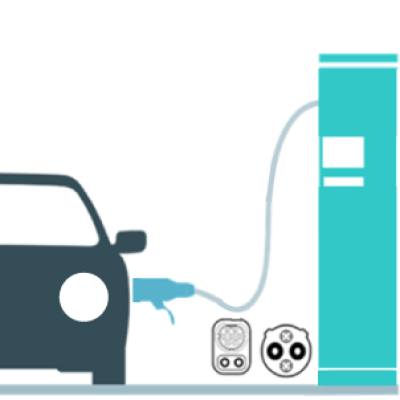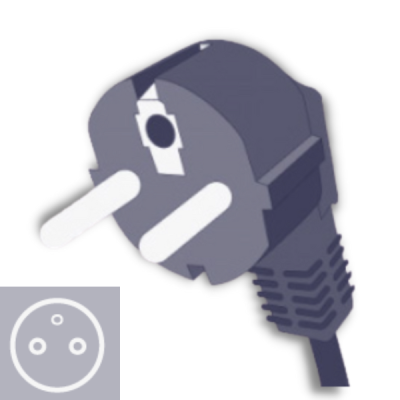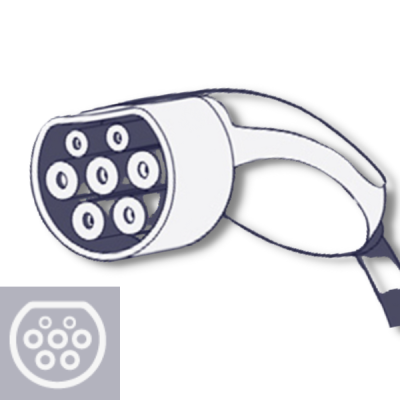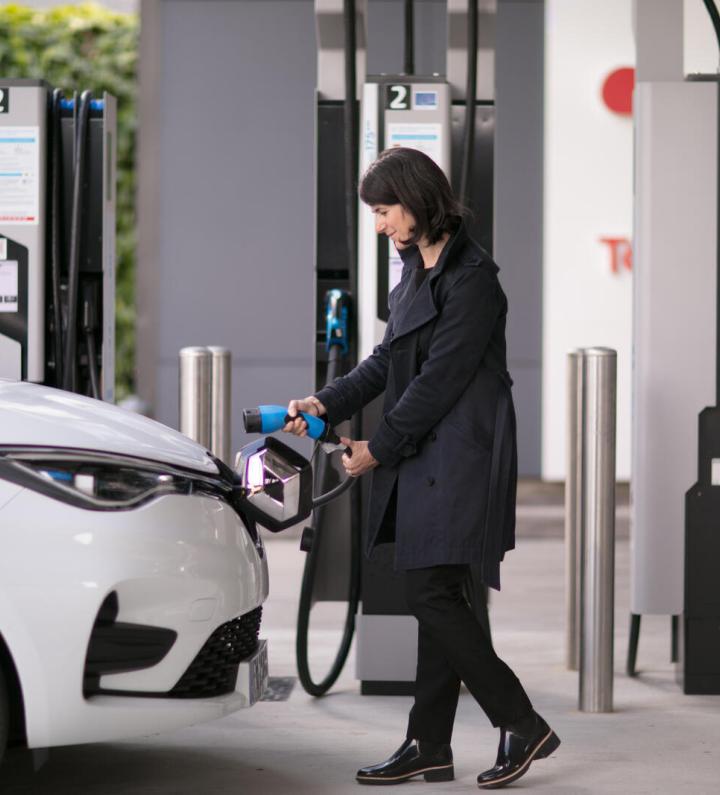Charging an electric vehicle: how does it work?
Charging an electric vehicle: how does it work?
In 2022, the number of licensed electric and plug-in hybrid vehicles in France passed the symbolic one million mark. Nearly every one in five new car sold last year was electric. In a rapidly changing and increasingly popular sector, it can be difficult for the uninitiated to understand how all the different charging methods work or the specificities of using the various electrical outlets. TotalEnergies can help you understand.
The development of the electric vehicle sector is driving the emergence of new markets and players, including electricity suppliers, charge point manufacturers, installation engineers, maintenance firms and even charging service providers.
To support the growth of the electric mobility market, various solutions are available for helping address the energy transition challenge. A prime example is TotalEnergies' decision to invest in the deployment of electric vehicle charging infrastructures (EVCIs).
Electric mobility: charging solutions adapted to every use
Several questions are swirling about this new form of mobility. What are the charging methods? What are the different power ratings? What type of socket do you need for a specific type of charging? Which sockets are available at home? What about at public charge points or service stations?
The different types of sockets and connectors according to the charging type
Unlike an internal combustion engine vehicle, which can only be filled up at a service station, an electric vehicle can be charged at various locations, such as at home, work, an on-street charge point, a dedicated hub or a service station. These locations correspond to different use cases and therefore different customer journeys.
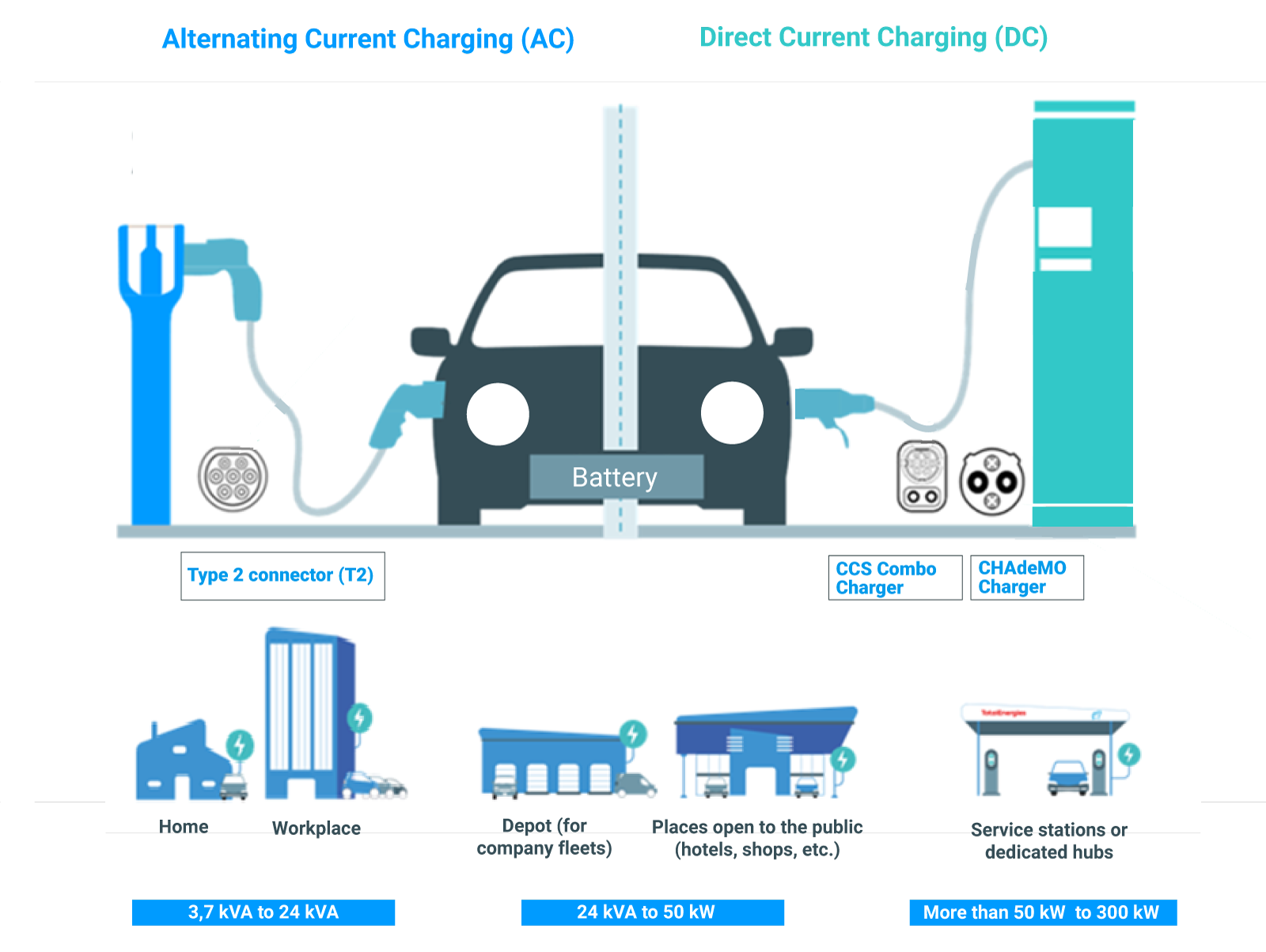
It is important to note that DC current is the only form in which electricity can recharge a battery:
When charging at an AC charge point, the current is converted into DC by the car's onboard inverter for supplying the battery.
When charging at a DC charge point, the actual charge point converts the AC current from the grid into DC before sending it to the car for storage and to supply the battery.
To receive the energy that they need to run, all electric vehicles have a socket built into the chassis. The type of socket depends on the manufacturer and the vehicle's technical specifications. Therefore, a distinction should be made between the sockets at charge points (when the cable is not attached) and the sockets on electric vehicles.
AC (alternating current) charge points
deliver a charging capacity from 3.7 kVA to 43 kVA. They are suitable for charging at home, at work or on the street, since the vehicle remains parked for several hours or even overnight. Therefore, rapid charging is not required, meaning that the charge point does not need to deliver a high power output.
This type of charging is currently the most widespread, most suitable and least expensive method when the vehicle is parked for a long period of time. Users can take advantage of the parking time to charge their vehicle.
DC (direct current) charge points
deliver a charging capacity from 50 kW to 350 kW. They tend to be used in dedicated hubs for rapid, high-power charging, such as service stations, charging hubs or even in the parking lots of public-access buildings (shopping malls, movie theaters, restaurants, etc.). Thanks to their high power rating, they can charge a vehicle during a short parking period (about 45 minutes). The price of charging the vehicle is higher, but drivers use them less often. This is known as opportunity charging when users are on the road (i.e. they are not using their vehicle at home or at work).
Electric mobility: how do you charge an electric car?
Overview of the different types of sockets around the world
CHAdeMO, Combo CCS, Type 2... when it comes to electric vehicles, there are many different types of sockets. Each socket requires a suitable connector, i.e. the "plug" on either side of the cable or at the end of the cable if it is already attached to the charge point.
In 2013, the European Union implemented an EU Directive that requires charge points to be equipped at least with Type 2 vehicle sockets or connectors.
In other parts of the world, Type 1 sockets are still the standard, especially in Japan and the USA. These sockets are mainly present on first generation EVs, but they are gradually being phased out by Type 2 sockets.
In the United States, the government has passed a new standard that requires charge points to offer the CCS (universal charger) socket. China will be adopting a new charging protocol in 2023 by introducing version 3.0 of the CHAdeMO protocol.
The different types of EV sockets and their connectors
Type E/F socket
A Type E/F socket can be found in every home or garage, and is one of the easiest ways to charge an electric car with alternating current (AC).
Most electric vehicles are marketed with a cable for plugging into this type of socket.
Charging from a domestic socket also takes the longest. These sockets limit the authorized power to 10 A, which is equivalent to just over 2 kVA*.
*kilovolt-ampere
Type 2 socket
The Type 2 socket (commonly known as T2) can be found at most public and home charge points and is also used for AC charging (alternating current).
What makes this socket special is that it is not only available at charge points, but also present on the majority of vehicles on the market. It is the European standard for alternating current (AC).
Type 2 sockets can support a higher power rating than Type E/F sockets, which reduces the charging time when charging at home.
This is known as slow or normal charging with a power capacity between 3.7 kVA and 43 kVA.
Combo CCS socket
The Combined Charging System (CCS) socket can be found on the high-power chargers at our service stations or rapid charging hubs, and is now fitted to nearly all new electric vehicles on the market.
This socket has been designated the European standard for direct current (DC) charging and is designed for rapid, high-power charging with a power rating of 100 kW or more.
It is worth noting that a T2 connector is compatible with this socket; charging will simply be slower, since it will be AC only.
Both socket standards (T2 and Combo CCS) are now compatible with almost all electric cars sold on the European market.
CHAdeMO socket
The CHAdeMO socket was introduced in 2010 in Japan. Its name is said to be derived from a play on words "O cha demo ikaga desuka", meaning: "Let's have a cup of tea while we're charging!"
It was the first international standard for direct current (DC) charging. Today, it is gradually being replaced by the Combo CCS system, but it can still be found on rapid high-power charge points (DC terminals - especially installed in TotalEnergies service stations or our rapid charging hubs).
The latest versions of the CHAdeMO standard are capable of delivering up to 400 kW.
Preparing for large-scale electric mobility
The number of EV users continues to rise. This increase implies greater demand for electricity and the need to reinforce the electric grids delivering the energy needed to power the charging networks. As a long-standing player in energy for mobility, TotalEnergies is supporting the development of new forms of mobility and providing users with charging solutions while striving to minimize impacts on the distribution grid. This is why the Company decided to team up with 11 partners in September 2019 and contribute to the aVEnir project led by Enedis, the French distribution network operator.
The project aims to support the large-scale development of electric mobility by experimenting with interactions between the public electricity grid, charge points and electric vehicles, especially by exploring Vehicle-to-Grid (V2G) technologies. The principle behind V2G is a bidirectional charging technology aimed at allowing vehicles to return part of the electricity stored in their batteries to improve the operation of the grid and compensate for the intermittent nature of renewable energy.
As part of this project, the Company is looking for charging solutions that are capable of guaranteeing high service quality for users, while offering energy flexibility to reduce the impact of charging on the distribution grids.




